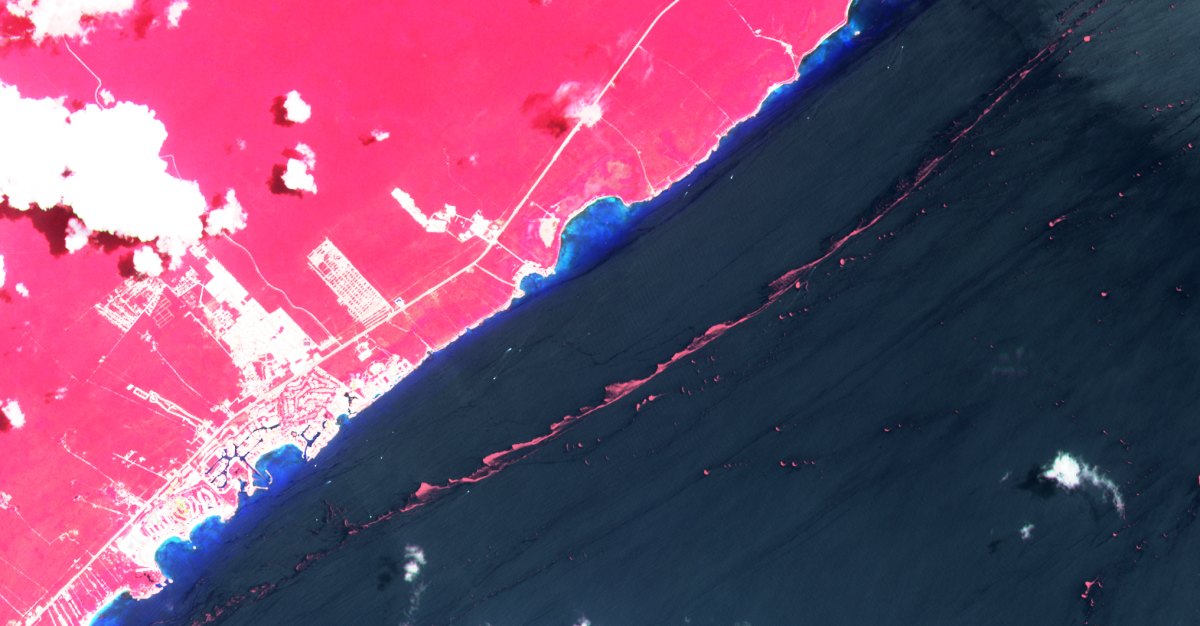Published on 5 August 2019
Over the last month, massive quantities of the Sargassum seaweed have been washing up on the shores of Mexico, Florida in the US and some Caribbean islands, creating a serious environmental problem and causing havoc for the tourist industry. ESA has been tracking this slimy infestation.
Sargassum can be seen surrounding the coast of Puerto Aventuras, just south of Cancun, Mexico. This image, which was acquired on 7 July 2019, has been processed in a way that highlights vegetation in red tones. The pink shades in the ocean show floating Sargassum, while the dark shades are most likely underwater Sargassum. The blue indicates shallow waters. Copyright processed by Ocean Virtual Laboratory
Sargassum is a large brown algae, first spotted by Columbus during his voyage to the Americas. Out at sea, Sargassum is an important habitat for marine species providing food, refuge and breeding grounds. However, when it collects along coastlines, it rots, producing a pungent smell and attracting flies. This can mean a real problem for tourism in coastal communities...
More info:
NASA Satellites Find Biggest Seaweed Bloom in the World
